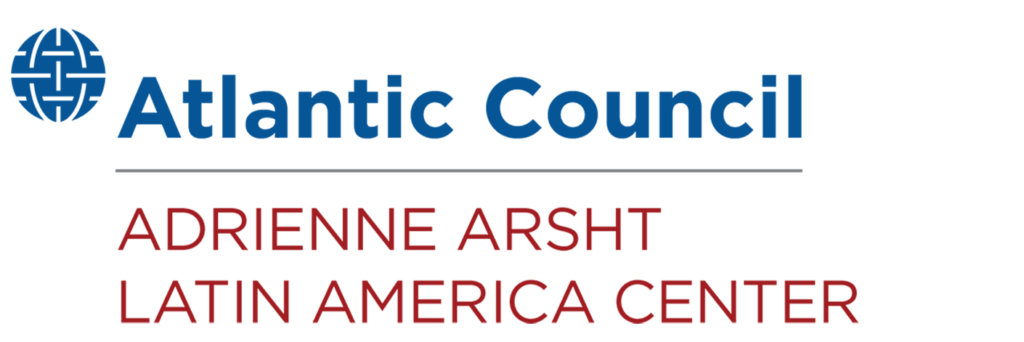Build on shared global priorities
THE BICENTENNIAL COMMEMORATION of US-Colombia diplomatic relations is a time to celebrate and reflect on our countries’ deep, strong relationship, one built on shared values, mutual help, cooperation, and a firm commitment to the ideals of freedom and democracy. Colombia and the United States have historically addressed their differences with respect and pragmatism and worked together to advance bilateral, regional, and international priorities.
Simón Bolívar and the founders of Gran Colombia—Colombia, Ecuador, Panama, and Venezuela—looked to the French Revolution and the Declaration of the Rights of Men as guiding principles for the new nation. They studied how the United States defined and structured its new government with its division of powers. Bolívar sent Manuel Torres to Washington to learn firsthand about this inspiring project and seek support and diplomatic recognition. Two years after its independence from Spain, Gran Colombia became the United States’ first diplomatic partner in Latin America, and Torres, the first diplomatic attaché. Colombia remains the longest-standing democracy in Latin America, and its constitution was inspired by the democratic principles of the US Constitution.
Our two countries continue to work side-by-side to defend civil rights, freedom, and democratic governance. Russia’s unprovoked invasion of Ukraine is a reminder that we must not take our political freedom or responsibilities for granted. Both our countries understand the importance of defending our democratic system and values. Colombia fought with the United States in the Korean War against the spread of communism. Through Plan Colombia and Peace Colombia, the United States has provided strategic support and more than $12 billion in assistance to face the threats posed by illicit groups and their criminal activities. Colombia has been an indispensable US partner in training more than 17,000 police and prosecutors in Central America via the US-Colombia Action Plan since 2013.1“Bureau of International Narcotics and Law Enforcement Affairs: Colombia Summary,” US Department of State, accessed March 1, 2022, https://www.state.gov/bureau-of-international-narcotics-and-law-enforcement-affairs-work-by-country/colombia-summary/.
Multilateral institutions and the US-Colombia relationship
Central to our relationship has been our mutual commitment to multilateral and international institutions as an essential means to address regional and global challenges. Our two countries were founding members of the United Nations (UN) and remain actively involved in the UN system. When the UN sought to extend the Millennium Development Goals, Colombia suggested that the new Sustainable Development Goals (SDGs) have sustainability and environmental dimensions in addition to economic ones. Colombia then set an example by incorporating the SDGs into the National Development Plan, including commitments at the national, regional, and local levels.2Localizing the 2030 Agenda in Colombia, Development Dialogue paper 25, Dag-Hammarskjöld Foundation, December 2018, https://www.daghammarskjold.se/publication/localising-the-2030-agenda-in-colombia/. After signing the peace agreement in 2016, the Colombian government and the Revolutionary Armed Forces of Colombia (FARC) requested that the UN create a verification mission to monitor the reincorporation process and the safety of former FARC combatants. The mandate has been extended until October 2022.
As founders of the Organization of American States (OAS), Colombia and the United States have helped lay the foundation for programs addressing economic and social needs and defending democratic institutions. An early example was the Alliance for Progress, a far-reaching US program to strengthen hemispheric growth and address Cold War challenges. Developed by Colombian President and Secretary General of the OAS Alberto Lleras Camargo, US President John F. Kennedy, and Brazilian President Juscelino Kubitschek, this ambitious program supported rural reform, expanded housing, and improved public education. In September 2011, with active US and Colombian participation, the OAS approved the Inter-American Democratic Charter, affirming that democracy is and should be a common form of government for all countries of the Americas; it also included objectives to defend human rights, fight poverty, and maintain a democratic culture.
Our global agenda
The United States and Colombia should prioritize cooperation in advancing fundamental areas of the UN’s Our Common Agenda and the objectives of the OAS’s Ninth Summit of the Americas, including strengthening democracy, the rule of law, and human rights protections, as well as promoting inclusive economic growth, sustainability and climate action, and solutions to migration-related challenges. These issues are linked and should be considered comprehensively.
Democracy, security, the rule of law, and human rights
Public opinion surveys Latinobarómetro and the Edelman Trust Barometer show a growing loss of confidence in democracy and political leader- ship throughout Latin America. This dissatisfaction was evident during the 2019 violent protests in Colombia, Chile, Ecuador, and Peru and the 2021 nationwide demonstrations in Colombia. Many see democracy as working for only a few and not addressing Latin America’s income inequality, among the highest in the world. Concern with growing corruption, ineffective judicial systems, and deepening insecurity feed this problem.
As we look at the next two hundred years of US-Colombia relations, our two countries should continue to prioritize initiatives to enhance democracy, the rule of law, security, and human rights protections. Specifically, the United States could support Colombian-led efforts to strengthen the judiciary, increase government transparency, and create more effective structures for dialogue between the government, civic groups and organizations, youth, minorities, the private sector, and other key stakeholders.
Inclusive economic growth
The United States remains one of Latin America’s most important commercial partners, a role strengthened by a series of trade agreements: the Dominican Republic-Central America Free Trade Agreement, the United States-Mexico-Canada Agreement, and bilateral agreements with Chile, Colombia, Panama, and Peru. Still, ongoing opportunities and great potential exist to increase commerce by simplifying procedures and providing more technical support to facilitate compliance with US product standards. Another area of opportunity with significant security and commercial implications is nearshoring the production of essential parts of US industry supply chains in Latin America rather than in distant Asian markets. Colombia is uniquely positioned to receive these nearshoring projects, given its geographic proximity to the United States and the stable and predict- able commercial environment provided by the US-Colombia Trade Promotion Agreement.
According to the Inter-American Development Bank (IDB), Latin America has a significant infrastructure investment gap of approximately $150 billion per year.3Building Opportunities for Growth in a Challenging World, Inter-American Development Bank, 2019, https://publications.iadb.org/publications/english/document/2019_Latin_American_and_Caribbean_Macroeconomic_Report_Building_Opportunities_to_Grow_in_a_Challenging_World_ en_en.pdf The region requires roads, ports, airports, and connectivity. With the US Development Finance Corporation’s (DFC’s) extended authorities to invest in equity, provide technical assistance, and undertake transactions in local currency, the United States is well-positioned to finance infra- structure projects. As recommended by the Atlantic Council’s US-Colombia Task Force,4Atlantic Council US-Colombia Task Force, A plan for Colombia’s COVID recovery and why it matters for the United States, Atlantic Council’s Adrienne Arsht Latin America Center, December 8, 2021, https://www.atlanticcouncil.org/in-depth-research-reports/report/a-plan-for-colombias-covid-recovery-and-why-it-matters-for-the-united-states/. a concerted effort by the DFC to collaborate with the IDB, the IDB Investment Corporation, and the Development Bank of Latin America could create significant resources for financing infrastructure projects in Colombia. In addition, the US Department of the Treasury and the US Trade and Development Agency could work with the US private sector to identify barriers to the investment and financing of infrastructure projects in Colombia. US agencies should then work with Colombia’s National Infrastructure Agency to address identified barriers.
Close cooperation in education, science, and technology would impact economic development, create new economic opportunities, improve productivity, and support innovation. Education and training programs could strengthen science, technology, engineering, and mathematics (STEM) skills and develop cyber capabilities and newer technologies such as artificial intelligence and robotics. Here, the US-Colombia partnership could create a joint development strategy to fund research centers in Colombia, modeled after those of the US National Science Foundation and the National Institutes of Health.
Also, research and exchange programs between our two countries would strengthen economic growth, well-being, and binational ties by promoting friendship, trust, and respect among US and Colombia participants. Exchanges among universities, professors, and students lay the foundation for long-term productive relationships, the backbone of economic development.
Sustainability and climate change
Latin America is home to the two most biodiverse countries in the world, Brazil and Colombia, and the Amazon Rainforest, the most biodiverse place on Earth. Protecting this unique reserve has lasting implications for global hydrological cycles, oxygen production, and carbon absorption.
For more than thirty years, Colombia has implemented a progressive approach to conserving biodiversity and the rainforest by recognizing the rights of Indigenous communities. These communities’ cultures, knowledge, and respect for the rainforest’s fragile ecosystem have effectively protected it. To address rising degradation concerns, Colombia proposed the Leticia Pact of 2021, with Bolivia, Brazil, Ecuador, Guyana, Peru, and Suriname as partners in monitoring, conserving, and implementing strategies to tackle deforestation.
As signatories of the Paris Accord, the United States and Colombia are working to achieve net-zero emissions, serving as an example to other countries. To do so, the United States has made a significant commitment to reduce 2005 carbon emissions by half by 2030, while Colombia has focused on decreasing deforestation and a 40 percent carbon emission reduction.
Migration
Immigration throughout Latin America is on the rise. Colombia had limited immigration until very recently, but it now faces an overwhelming challenge having received nearly two million migrants from Venezuela. The country has displayed remarkable solidarity toward incoming Venezuelans, implementing policies to assist and integrate them into the Colombian economy and society, including a ten-year temporary permit that grants them access to employment, education, and healthcare services, including COVID-19 vaccines.5Rachel Treisman, “Colombia Offers Temporary Legal Status To Nearly 1 Million Venezuelan Migrants,” National Public Radio, February 9, 2021, https://www.npr.org/2021/02/09/965853031/colombia-offers-temporary-legal-status-to-nearly-1-million-venezuelan-migrants. It also gave Colombian nationality to children of Venezuelan mothers born in Colombia.
As the largest donor in response to the Venezuelan regional crisis, the United States should encourage the international community to fully fund their pledges and increase financial support to Colombia as it absorbs 34 percent of the population forced to flee Venezuela. Moving forward, the US-Colombia partnership should also prioritize programs that address the principal drivers of the Venezuelan exodus, namely violence and the lack of economic opportunities. In addressing other migration crises, we should learn from the Colombian experience and respond with efficient, humane, and transparent procedures and programs.
Final thoughts
Our two nations were founded on the ideals of freedom and democracy. As we celebrate the bicentennial of our relationship, we should recognize our progress while acknowledging remaining challenges and working to seize future opportunities. Now is the time to develop new approaches and responses that will lead to more just, prosperous, and inclusive societies that can rebuild trust and confidence in our governments, democracies, and the ideals that we hold dear.
* * *
Amb. Carolina Barco formerly served as Colombia’s foreign minister from 2002 to 2006, Colombia’s ambassador to the United States from 2006 to 2010, and ambassador to Spain from 2019 to 2020. Barco was a consultant for eight years with the Inter-American Development Bank and is a member of the Atlantic Council’s US-Colombia Task Force.
Related Allies essays
A roadmap for a new type of engagement
This moment opens the door for a reimagined US partnership with Colombia based on a shared vision for a more prosperous, inclusive, and sustainable future.
Related program

The Adrienne Arsht Latin America Center broadens understanding of regional transformations and delivers constructive, results-oriented solutions to inform how the public and private sectors can advance hemispheric prosperity.
Image: Colombia's President Ivan Duque and Mark Wells, US Embassy Deputy Chief of Mission in Colombia, react as they attend the arrival of a shipment of Johnson & Johnson vaccines against the coronavirus disease in Bogota, Colombia on July 1, 2021. Photo via REUTERS/Nathalia Angarita.
